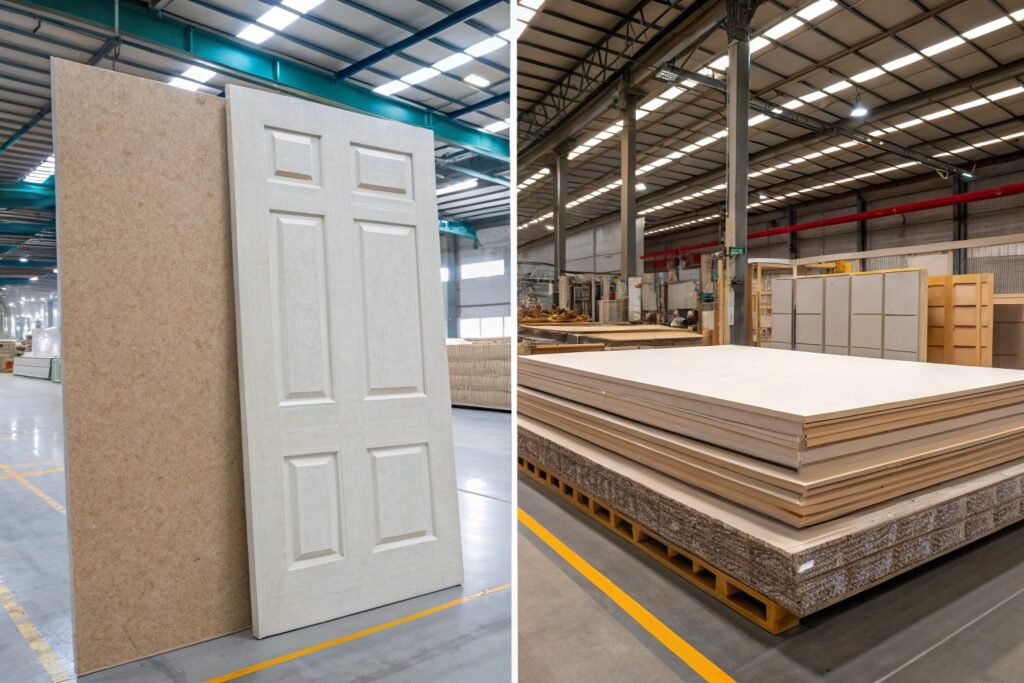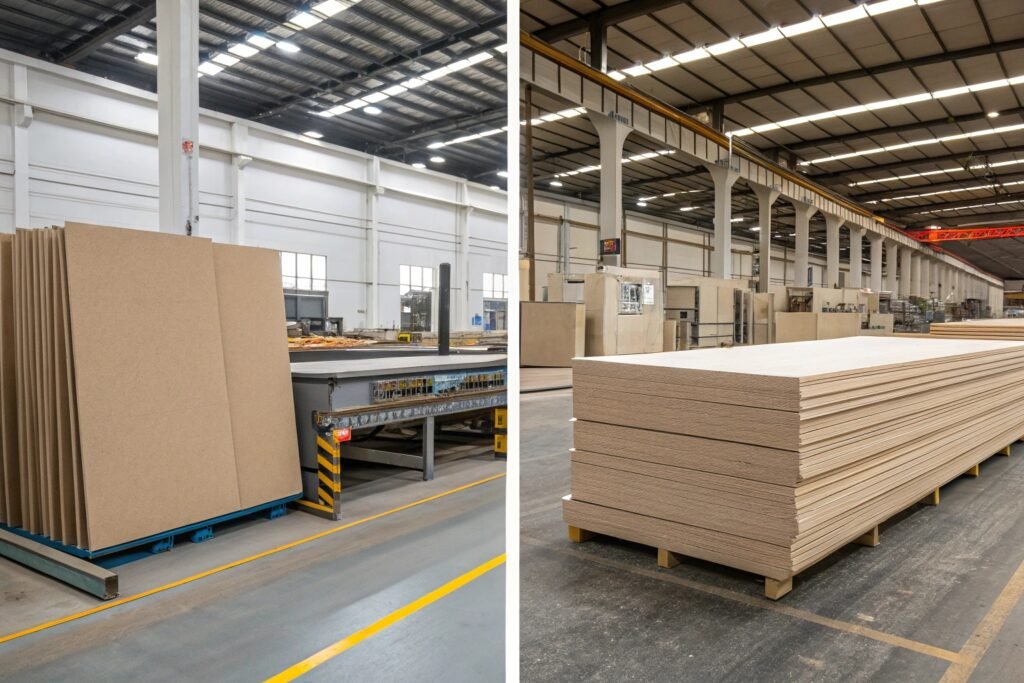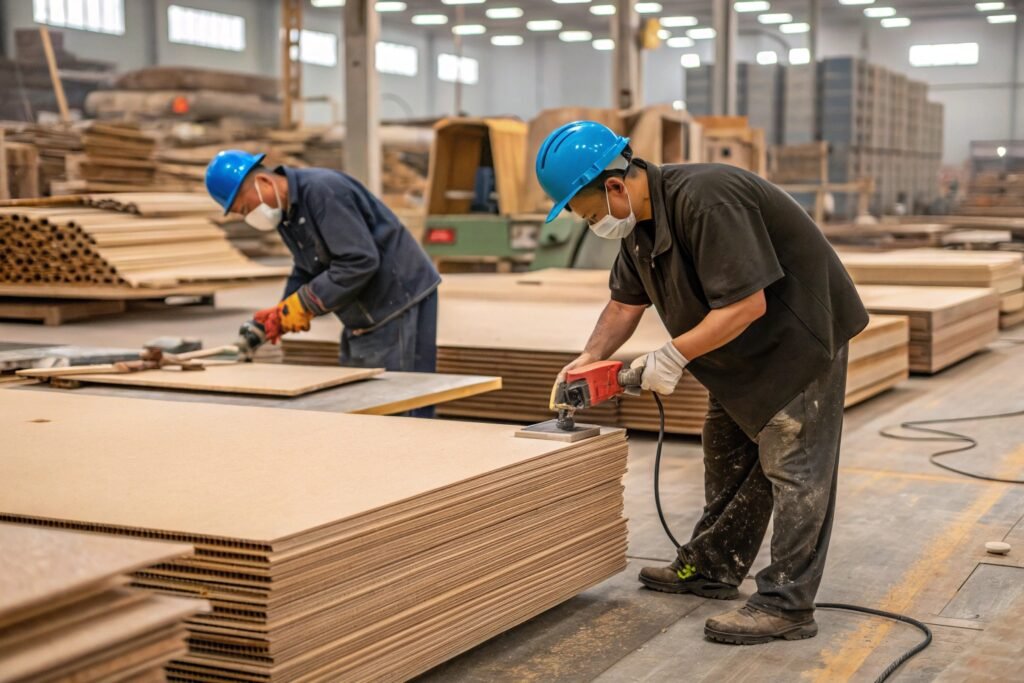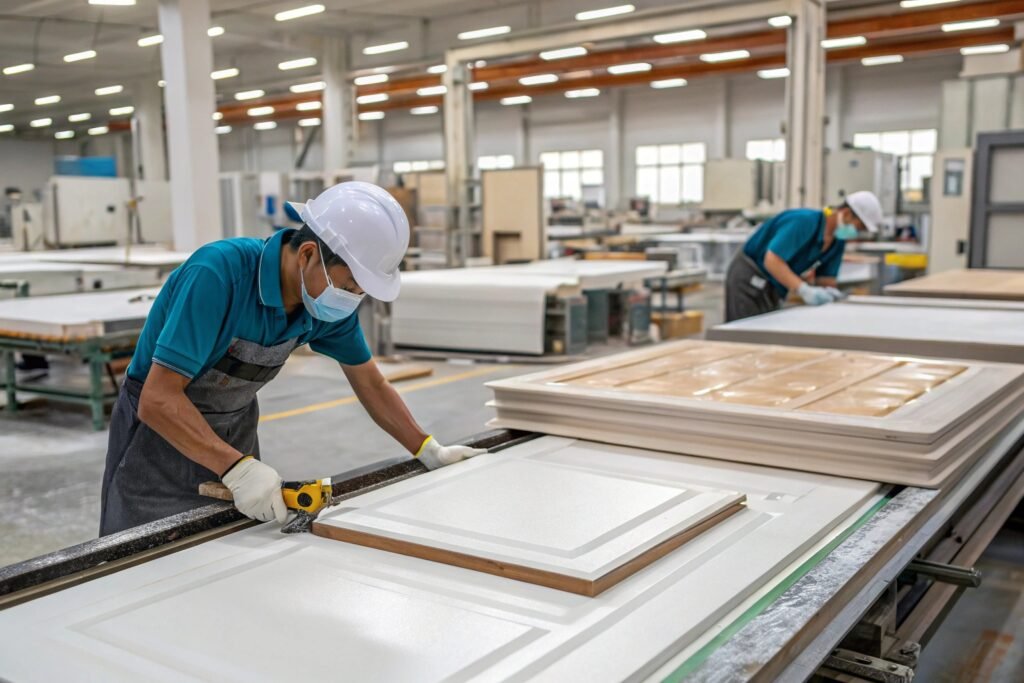They may look alike, but MDF and HDF serve different roles in furniture and interior design—choose wrong, and your board might buckle, swell, or break.
HDF is denser and stronger than MDF, making it better for flooring and heavy-duty backing, while MDF is easier to cut and better for decorative paneling and interior use.

Both MDF (Medium Density Fiberboard) and HDF (High Density Fiberboard) are engineered wood products made from wood fibers and resin. But their density, durability, and best uses vary greatly. For wall cladding, door panels, or baseboards, understanding how they differ in strength, moisture response, and surface finish can prevent failures and help you pick the right board every time.
Which is better, MDF or HDF wood?
One is lighter and easier to shape; the other is tougher and more moisture-resistant—so the right choice depends on where and how you use it.
HDF is better for impact resistance and flooring substrates, while MDF is better for indoor furniture, mouldings, and painted finishes.

HDF has a much higher fiber compression rate, usually above 900 kg/m³, compared to MDF’s 600–800 kg/m³. This makes HDF stronger and more resistant to dents or bending under pressure. It’s ideal as a core for laminate flooring or as back panels for heavy cabinetry. But it’s also harder to cut and drill, which means more tool wear and slower machining. MDF, being softer, machines easily and holds paint evenly, which makes it ideal for doors, wall panels, and interior trims. It’s also cheaper. So the "better" option comes down to function: load-bearing and flooring? Use HDF. Easy shaping and painting? Go with MDF.
What are the disadvantages of HDF wood?
It’s stronger—but is that always worth it?
HDF is heavier, harder to cut, and more expensive than MDF, which can increase costs in tooling, transport, and labor.

While HDF’s density gives it superior strength, it also makes it more difficult to work with. Cutting HDF boards requires sharp carbide tools, and the added wear reduces blade life. Its weight makes handling more challenging on-site. HDF is also more brittle at the edges, meaning it can chip if drilled too close to the sides. Its water resistance is better than MDF but not waterproof, so improper sealing can still lead to swelling. In decorative applications where surface detail, edge profiling, or light weight matter, MDF is often a smarter and more cost-effective choice.
Can you use HDF in a bathroom?
Bathrooms are tough on wood—moisture, heat, and humidity create constant stress.
HDF can be used in bathrooms only if it is sealed properly with waterproof coatings or used in laminated form, as it is not naturally water-resistant.

HDF is denser than MDF and holds up slightly better against short-term moisture, but it’s still fiberboard at heart—if exposed to water directly or repeatedly, it will swell and deteriorate. To use HDF in bathroom cabinetry or vanity backers, the panel must be laminated with a waterproof film or coated with epoxy or polyurethane. Also, all edges—especially cut edges—must be sealed thoroughly. Many laminate flooring systems use HDF as a core, but only when paired with a vapor barrier and moisture-resistant top layer. So yes, HDF can go in bathrooms—but only with proper surface protection.
What is MDF best used for?
Where HDF is too hard or heavy, MDF fits perfectly.
MDF is best used for interior furniture, wall panels, door skins, and decorative elements that require a smooth finish and easy machining.
MDF takes paint well and carves easily, making it ideal for routed designs, feature walls, cabinet doors, or wainscoting. It is dimensionally stable under normal indoor conditions and offers a uniform texture without grain or knots. It’s often veneered for a wood look or laminated with PVC or melamine. While it’s not suitable for wet zones without treatment, its affordability and ease of use make it a staple in modern interior woodworking. Whether you’re building custom shelving or decorative ceiling panels, MDF is the go-to board for design flexibility and cost-efficiency.
Conclusion
HDF offers strength and durability where load and wear matter, while MDF brings versatility and smooth finishes to indoor furniture and decorative builds—choose based on task, not just toughness.
